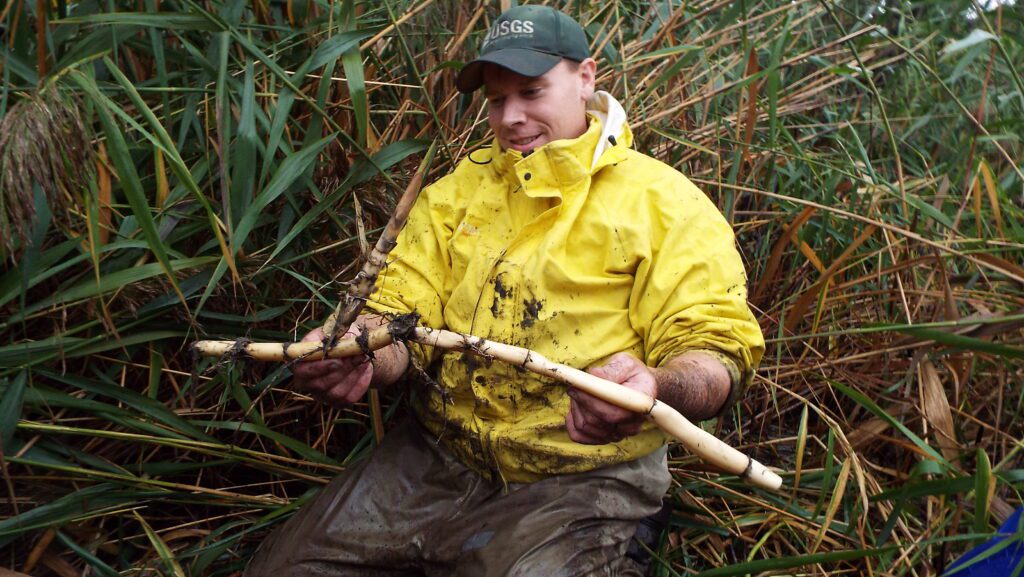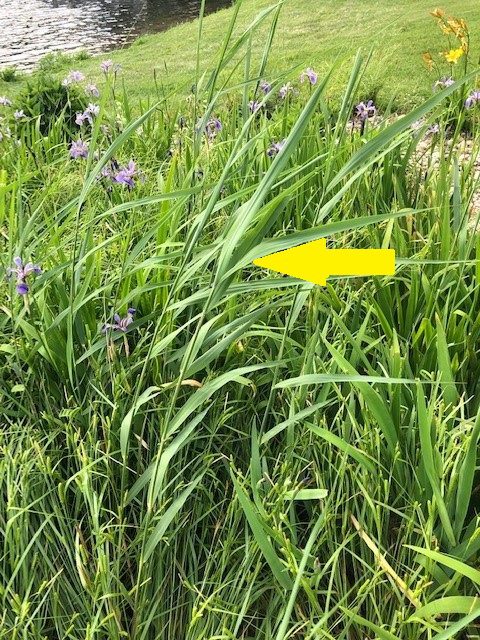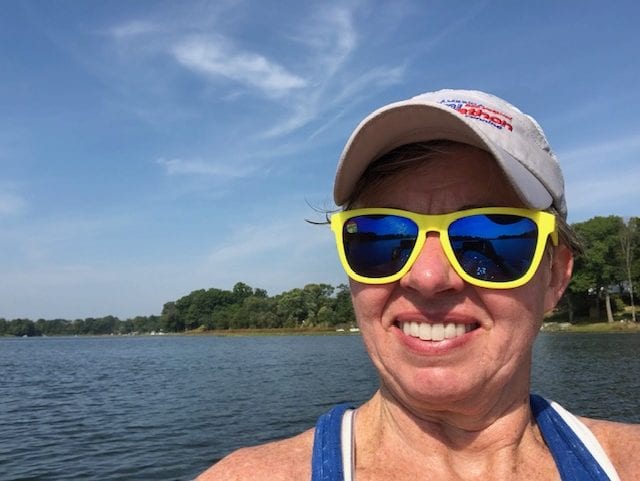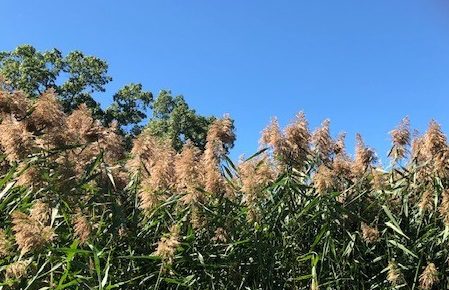phrag·mi·tes
(frăg-mī′tēz)

Phragmites australis is an invasive, perennial tall grass most often found in wetlands or surrounding ponds and lakes. You can easily identify them by their tall heights – which can reach fifteen feet, and feathery seed plumes.
If you are unfamiliar with what Phragmites looks like, drive to the outlow on the west side of the lake. There is a large stand on the west side of the road. Beginning in 2023, we are working with the homeowners to try to control this area.
What Makes Phragmites So Troublesome?
Phragmites is a very opportunistic and aggressive plant. It reproduces by seed, as well as through dense and deep-rooted rhizomes.

It is listed on Indiana Native Plants website as one of our state’s worst invasives.
Meet Indiana’s Bad Guys – INPS (indiananativeplants.org)
- Impedes recreational use of water
- Obstructs stormwater management systems
- Threatens or even destroys waterfowl habitats
- Chokes out native and beneficial plant species
- Forms areas of dry, hazardous vegetation
While it may start as a small patch, and may even look quite pretty when blooming, it quickly spreads, choking out native plants and decimating waterbodies.
So Just Get Rid of It!

I recently found a few spikes of Phragmites in my rain garden. I attempted to dig them out and quickly learned I didn’t just have a few spikes. It was well on its way to getting established and I knew if I didn’t take action, I would soon have a rain garden filled with only Phragmites.
Glysophate is an effective herbicide for killing Phragmites and I recently wrote about the hazards of using it near open water. However, once I realized that I wasn’t going to solve my problem with digging, and since it was a small area, I decided glysophate was warranted. Making sure there was no rain in the forecast and wearing gloves, I soaked a rag with glysophate and ran the rag along the individual stems. This way I limited the amount of chemical I was using and there was no chance of overspray.
This method was extremely effective THIS SEASON. There are no seed heads, so I have controlled that method of spreading. I have killed all the above ground growth, so any below ground rhizomes are being starved of nutrients. I will watch for any new sprouts in the spring and anticipate repeating the glysophate soaked rag treatment next year.
There are Native Phragmites
Keep in mind there are native Phragmites. Stands of non-native Phragmites are typically very large, tall, and dense, while native stands are usually mixed in with other plants and not nearly as dense. This is not the only difference and shouldn’t be used as the sole identifier.
If you would like more information about Phragmites, more details on how to tell the difference between native and invasive and how to control, the Great Lakes Phragmites Collaborative is a great resource.

Hi, I’m Debbie Palmer. I received a BS in Horticulture from Purdue University. Here at LMEF, I am responsible for outreach presentations, monitoring the lake and it’s wetlands, project manager for restoration and research projects, and act as a community resource for all things related to the well-being of Lake Maxinkuckee and its surrounding watershed. I completed Indiana Watershed Leadership Academy, volunteer with the Indiana Clean Lakes Program, Hoosier River Watch and Marshall County Lakes and Waters and serve as a Board Member for Indiana Lakes Management Society.


Recent Comments